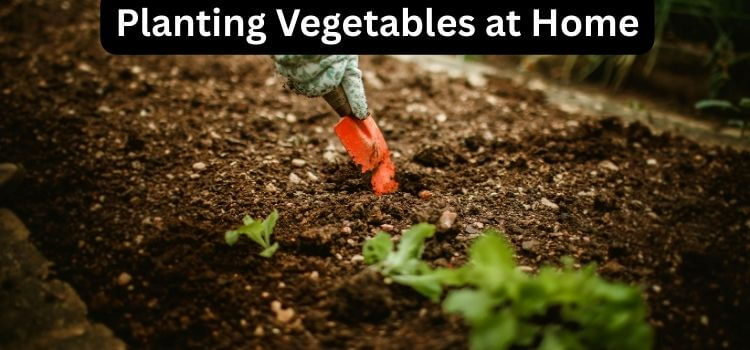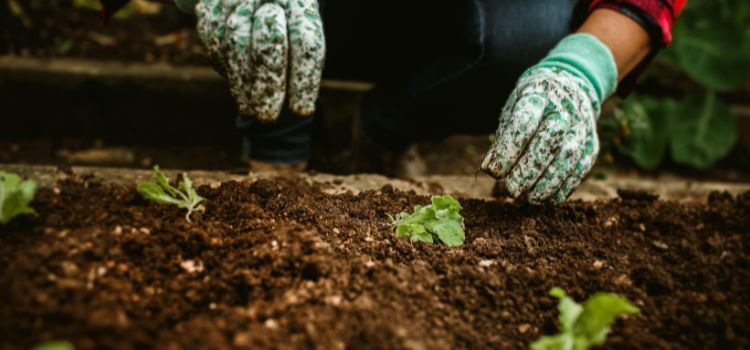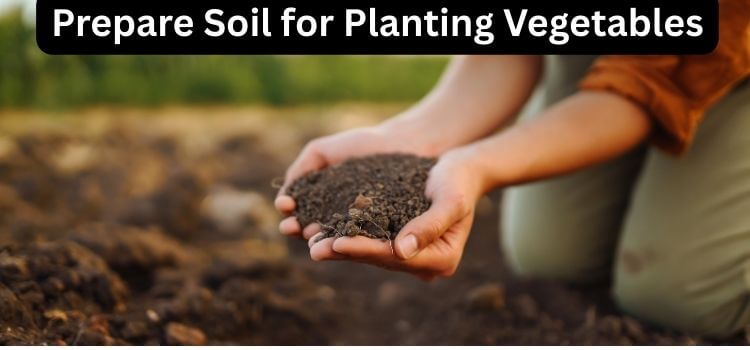As an Amazon Associate, I earn from qualifying purchases.
Growing your vegetables at home is one of the most rewarding experiences you can have. But let me tell you something from experience—without good soil, even the best seeds won’t grow. If you’re wondering how to prepare soil for planting vegetables at home, you’re in the right place. I’ve gone through this process many times, and I’ll explain it using simple words and short steps.
This guide will help you avoid confusion. Even if you understand only half of English, don’t worry. The steps are easy, the language is simple, and the results are excellent. We’ll talk about tools, compost, soil types, and more. The soil you use is like the bed your plants sleep in. If it’s soft, full of nutrients, and free of weeds, your vegetables will grow fast and healthy.
Let’s get our hands a little dirty and make your garden unforgettable!
What Is The Right Type Of Soil For Home Vegetables?
Before planting, you need to know what kind of soil works best. All soil is not the same. Some are too dry, others are too wet. I once planted tomatoes in clay soil, and they barely grew. Later, I found out the roots couldn’t breathe.
Vegetables grow best in soil that is loose, dark, and holds water—but not too much. This is called loamy soil. It’s a mix of sand, silt, and a little clay. When you squeeze it, it should stick together but break apart easily.
You can check your soil type at home:
- Take a handful of soil.
- Wet it slightly.
- Roll it in your palm.
- If it feels soft and crumbly, that’s good soil.
If your soil is too complicated or sandy, don’t worry. We can fix it. You can add compost or organic material to change the texture. That’s how I turned my dry backyard into a green space full of carrots and coriander.
Note: Avoid using soil from areas with garbage, chemicals, or oily water.

How Can You Test Soil Health Without a Lab?
Many people think they need expensive tools. You don’t. I’ve used simple ways to check if my soil is healthy.
Here are some basic tests:
- Worm test: Dig a small hole about 6 inches deep. If you find 3–5 worms, your soil is healthy.
- Weed test: If weeds grow fast, the soil may have nutrients.
- Water test: Pour water and see how long it takes to absorb. If it soaks in fast, your drainage is good.
Let’s see a comparison chart:
| Test Type | What You Learn | What To Do If It Fails |
|---|---|---|
| Worm Test | Soil has life | Add compost |
| Water Drainage | Soil is loose enough | Add sand or dry leaves |
| Smell Test | Should smell earthy | Add dry compost, avoid trash |
Healthy soil smells like earth, not like chemicals or oil. If it smells bad, dig it up, remove bad stuff, and add fresh compost.
How Do You Make Compost At Home Easily?
This part is fun. Making compost at home is like making free food for your soil. I use a plastic bucket in my kitchen and a small pit in my backyard.
Add these things to your compost:
- Fruit and vegetable peels
- Tea leaves
- Eggshells
- Dry leaves
- Small paper pieces
- Cow dung (if available)
Avoid these:
- Meat and fish
- Plastic or glass
- Oily or salty food
Mix it every week. After 4–6 weeks, it becomes black and smells like earth. That’s compost. Spread it over your soil, and you’re ready.
This technique is superb! It not only helps your plants grow but also reduces waste. You don’t need to buy expensive fertilizer. Compost works better and is safer.
Note: Always cover your compost to keep away flies or rain.
What Are The Exact Steps To Prepare Soil Before Planting?
Let me break this down step-by-step. This is how I prepare my soil every season. It always works well.
- Clear the Area: Remove grass, weeds, stones, and trash.
- Dig the Soil: Use a spade or shovel. Go at least 8 inches deep.
- Add Compost: Mix in 2–3 inches of homemade compost or organic fertilizer.
- Loosen the Soil: Break big clumps. Keep it soft.
- Level the Surface: Use a rake or stick to flatten the top.
- Water Lightly: Don’t flood it. Just enough to make it moist.
- Wait 2 Days: Let the soil rest before planting.
That’s it! Now you’re ready to plant seeds or seedlings.
Here’s a visual table:
| Step | Tools Needed | Why It Matters |
| Clear area | Hands, gloves | Removes unwanted plants |
| Dig deep | Spade or shovel | Lets roots go deeper |
| Add compost | Compost, bucket | Adds nutrients |
| Loosen clumps | Hands or rake | Air goes in |
| Level soil | Stick or rake | Water spreads evenly |
| Water soil | Watering can | Helps seed sprouting |
Why Does Soil pH Matter For Vegetable Growth?
This one may sound hard, but I’ll make it easy. Soil pH refers to the acidity or basicity of your soil. Most vegetables grow best when the pH is between 6.0 and 7.0. This is slightly acidic to neutral.
If the soil is too acidic (pH below 5), your plants won’t absorb nutrients. If it’s too basic (above 8), it blocks minerals.
Here’s the easy way to test:
- Buy a simple pH kit online or from a nursery.
- Take some soil in a cup.
- Add test powder or strip.
- Check the color and match it to the chart.
If your pH is low, add lime powder. If it’s too high, add sulfur or compost.
Do you think your vegetables are not growing well, even with water and sun? Maybe it’s the pH. A small test can fix big problems.

What Should You Avoid When Preparing Soil?
Let me tell you what I learned the hard way. I once added too much fertilizer and my plants died. Here are common mistakes you should avoid:
- Avoid using soil contaminated with plastic, metal, or chemicals.
- Don’t plant in dry, cracked soil.
- Don’t add too much fertilizer or cow dung.
- Don’t flood the soil before planting.
- Don’t leave the soil open too long—it dries out.
Keep it balanced. Soil is like your stomach. Too much or too little of anything makes it sick. Treat your soil like a living thing—it will take care of your plants in return.
Frequently Asked Questions
Can I Use Regular Garden Soil For Vegetables?
Regular soil might not be enough. It needs compost and proper texture. Always prepare it before planting.
How Deep Should I Dig The Soil?
Dig at least 8 inches. Some vegetables like carrots need even deeper soil.
How Often Should I Add Compost?
Add compost every 2–3 months. You can also add a thin layer between crops.
Can I Prepare Soil In Pots?
Yes! Use potting mix with compost and coco peat. Make sure pots have drainage holes.
Is Sand Good For Vegetable Soil?
A little sand helps drainage, especially in clay soil. Don’t add too much, or the soil becomes dry.
Conclusion
Preparing soil for vegetables at home is not hard. It just needs time, care, and simple steps. I started with zero experience, and now I grow tomatoes, spinach, and chili in my backyard in Dhaka. It feels great to pick food you grew yourself.
The secret to healthy plants is healthy soil. Test it, feed it, and protect it. You’ll see your garden change like magic. If I can do it, so can you.
Go ahead—try this weekend. Your plants will thank you.

